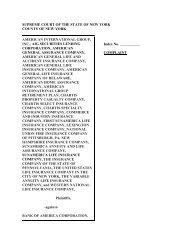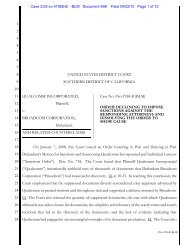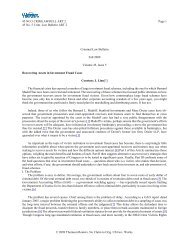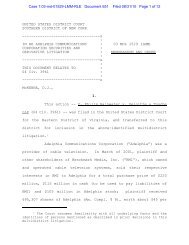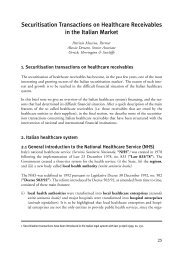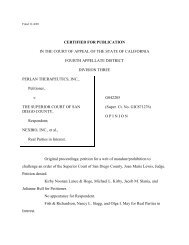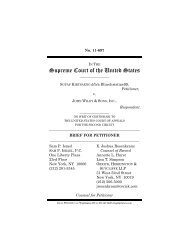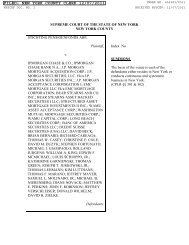Public Charter Schools Borrowing With Tax-Exempt Bonds, Second ...
Public Charter Schools Borrowing With Tax-Exempt Bonds, Second ...
Public Charter Schools Borrowing With Tax-Exempt Bonds, Second ...
Create successful ePaper yourself
Turn your PDF publications into a flip-book with our unique Google optimized e-Paper software.
it is advisable to consult bond counsel as early as possible regarding these issues<br />
and any related fundraising program. It is usually easier to raise funds for a project<br />
than for endowment, and bond counsel can offer advice about how to phrase fund<br />
raising campaign literature and pledge documentation (including in some cases how<br />
to recast pledges already received) in a manner designed not to interfere with the<br />
fund raising objective yet concurrently preserving the maximum opportunity for<br />
tax-exempt financing and for permissible arbitrage.<br />
In order to improve the security and possibly the ratings of the bonds (and<br />
thereby lower the interest rate), the public charter school may be asked to pledge<br />
a portion of any available reserve or other funds or to promise to maintain available<br />
fund balances at a particular level. If the pledge creates too great assurance that the<br />
pledged moneys will be available to pay debt service on the bonds (even if the school<br />
encounters financial difficulty), or if the fund balance required to be maintained<br />
exceeds the amount reasonable for the purpose for which maintained or is tested<br />
more frequently than semi-annually, the nexus between such funds and the bonds<br />
may be considered so close that applicable tax regulations will require the yield<br />
on investments of such funds to be restricted to the yield on the bonds, thereby<br />
eliminating some of the benefit of tax-exempt bonds. It does not matter whether the<br />
pledge or covenant is to the bondholders or to a guarantor of the bonds. However,<br />
it is usually possible to structure a pledge or fund balance requirement in a manner<br />
that provides reasonable security without tripping over the yield restriction line.<br />
Foundations, community development financial institutions, and other third<br />
parties may provide a variety of forms of financial support to a public charter<br />
school’s project, such as cash contribution, collateral or guaranty. The best structural<br />
choice to optimize the benefits of the tax-exempt financing will turn on similar<br />
issues to those discussed above, as well as on the particulars of any legal relationship<br />
between the third party and the school.<br />
The proper allocation of the resources mentioned at the beginning of this<br />
chapter is an important part of the “art” of structuring a financing that maximizes<br />
the benefit of the tax-exemption of interest on the bonds and the potential arbitrage<br />
earnings advantage described above. In situations where these opportunities apply,<br />
this will be one of the most important steps in formulating the transaction.<br />
While the circumstances are too varied and the applicable tax rules often too<br />
complex and subtle to cover more thoroughly here, advice of highly qualified bond<br />
22



